Scythe is a game we were always interested in but mostly dismissed with the thought of “it probably doesn’t work well with 2p”. We were wrong! We played it a lot lately and it definitely works for us. I am sure it is not the same as with 4-5 players, but it gives us a tense experience every time we play it – and what you might lose in tightness, you win back with less downtime.
Our very first game left us with a sub-par impression. Somehow the whole game felt one-sided and loose. However we quickly set up a new game and tried again, more familiar with the gameplay, rules, and with more idea of a strategy. Luckily that second match immediately overrode this inferior experience – in this new match I got exactly what I have originally anticipated – an exciting, down to the wire, nail-biter game, where every decision mattered, and every combat was pretty high stakes. Up until the very end of the scoring it wasn’t clear who’d win. The games following that one were also all similarly tense.
Aesthetics
There is a lot to like in this game. A nice starting point is definitely the art – this is also the first thing everyone encounters when they notice the game in a store. The painting-like pictures of simple eastern-european landscapes juxtaposed with menacing and hulking mechanized walkers are simply brilliant. The whole alternate dystopian history theme works really well.
The map is a bit noisy though, and takes some time getting used to. At least we struggled a bit at first with filtering out the useless information.
Gameplay
The biggest surprise is how fast a match plays (at least in 2p). We are done in under an hour, and crave for more every time! – and we aren’t really fast players. The turns are snappy, yet the game feels tense and exciting. There is a clear sense of progression and a nice arc to the game.
I think all of these positives stem from the brilliant action selection system:
There are 4 top-row actions randomly paired with 4 bottom-row actions on your player board. On your turn you have to pick a column – as you can’t pick the same one twice, you basically only have 3 choices. It seems very simplistic, but it works really well.
As the game goes on you can upgrade stuff, place down buildings and remove tokens so costs and benefits change. Bottom-row actions always need some resources to activate, so if you want to do both the top and bottom actions, you will need to plan wisely. Chaining together actions so you get the most out of them is incredibly satisfying. This turn structure also makes downtime quite short (well I can only talk of 2p as of now, but still).
Actions
So what can you do on your turn? These are the top-row actions:
- Move: allows you to move workers, mechs and your character, though only 2 units at first. There are many nuances to this, like mechs taking workers along with them, or rivers, lakes and tunnels changing things up. Your character can gather tokens to draw an encounter card and choose an outcome, gaining you all kinds of things.
- Produce: create resources on some hexes with your workers. The interesting part is that resources stay on the board, and are spent from the board. So producing out of position behind enemy lines could easily backfire.
- Bolster: raise your military power or draw combat cards.
- Trade: get two resources of your choice or get popularity. Depending on where you start, certain resources won’t be immediately available to you, so this action is key. Popularity is also very important as it has a huge influence on end game scoring.
These actions are paired with the following bottom-row actions (each board has different pairings and costs):
- Deploy: use iron to deploy a mech to the board. Depending on which mech you take off your board, you unlock different faction-specific abilities.
- Enlist: use food to unlock bonuses for future bottom-row actions, whether you or someone else uses it.
- Upgrade: use oil to make top-row actions more useful, while making bottom row actions cheaper at the same time.
- Build buildings: use wood to place down buildings. Buildings each have different bonuses and also play a role in the end game scoring due to a scoring tile.
Winning the game
The whole game is basically a race. There are a couple of objectives, like having every worker, mech or building on the board, doing all upgrades, winning combat, etc. Whoever manages to complete 6 of them by placing all 6 of their star-tokens, triggers the end of the game. The one with the most money at the end wins, which means you could lose even if you triggered the end of the game – though if you have more objectives you probably played more optimally.
The popularity track plays a major role here – the bigger it is, the bigger the multiplier for the various scoring parameters (stars placed, hexes controlled, leftover resources). Many effects make you lose popularity, and it is not easy to go up on the track.
Combat
A part which took some getting used to was the combat system. It is quite simple: both participants secretly select how much of their military power they are willing to spend and secretly (optionally) add combat cards. Biggest sum of power value wins, and each party loses the selected amount of power, no matter the outcome. So this is mostly about bluffing, but you can sometimes calculate how to win a combat 100%. It can be tense though as you calculate what the other might choose.
There is a big incentive to fight: the first two won battles allow you to place a star on the ‘win combat’ objective. It is a double-edged sword though, because if you lose you just helped your opponent. As you can’t get more than 2 stars, combat gets a less important after that, though controlling hexes is also important. Another incentive is the middle hex on the board: the Factory. If you come here with your character you get to claim a factory card, which basically gives you a fifth possible action to take, and that can be a big advantage. The Factory also counts as 3 controlled hexes, which is a nice bonus at end-game scoring.
What we love…
As you get your faction, action board and objective cards you have to quickly study them and make a game plan 🧐 – though this plan will have to be tweaked throughout the game, reacting to what the other is doing.
I really like the variability that the setup provides: not only do the factions have asymmetric abilities, but the pairing of top and bottom row actions on your action board, their costs, boons and possible upgrades will be different too. Each game has a ‘structure bonus’ tile which rewards specific building placement.
Scythe with 2 players accommodates vastly different play styles and experiences. If you feel like waging war, just rush for building the tunnel or unlock riverwalk and you can quickly reach your opponent. If you both want a more relaxed experience, you could also just peacefully perfect your engine and avoid combat throughout the whole game and have an Uwe-like optimization puzzle and still feel accomplishment at the end!
… and what we don’t
I am not sure yet if all factions are well balanced for 2 players though. We tried all of them in different pairings (although admittedly not in every possible combination) and we felt like some were better than others. One we definitely feel is overpowered, as they can choose 2 of the rewards from encounter cards and even move easier on the map. As there are a lot of encounter tokens to gather on the empty map with 2p, this quickly gets out of hand. This is something we definitely want to explore more in the future, and also see how the modular board expansion addresses this. Still I love how much asymmetry is in the game, be it the faction boards, mech abilities, player boards or drawn objectives.
Conclusion
We were convinced by Scythe. It is indeed a great game that doesn’t just work with 2p, but provides an amazing experience. We already decided to get every expansion for the game in the near future.
Disclaimer: We were provided with a review copy by the publisher.
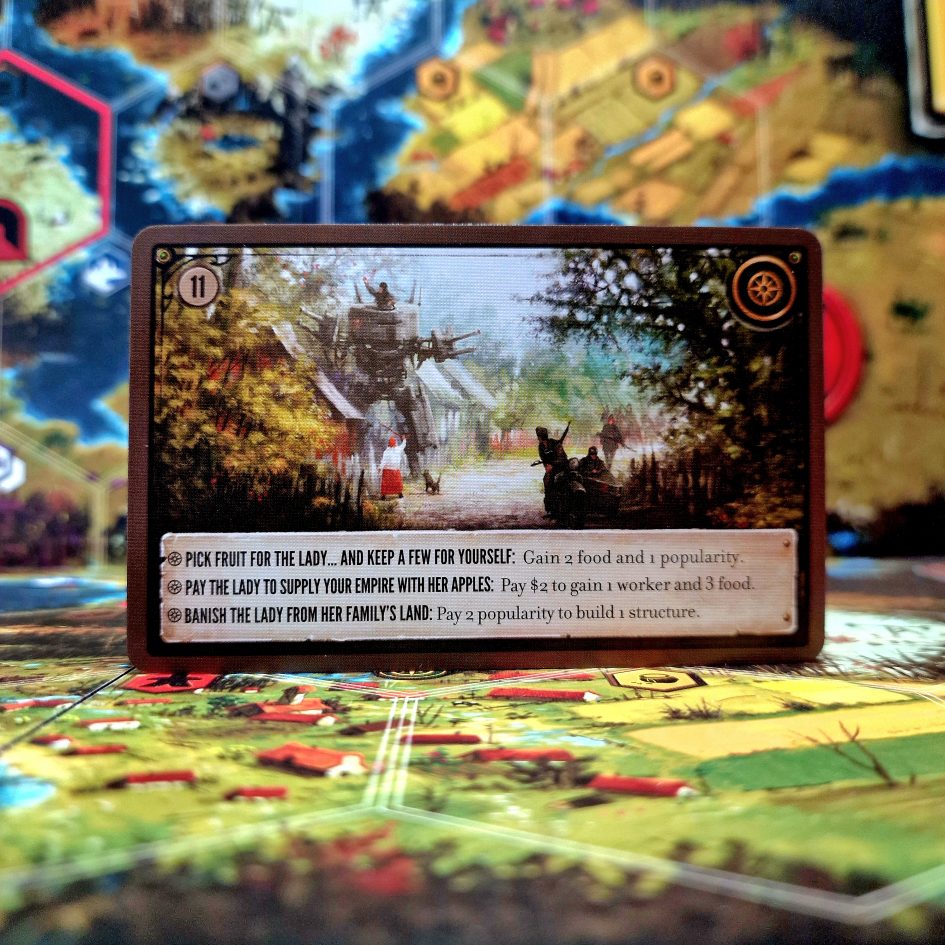



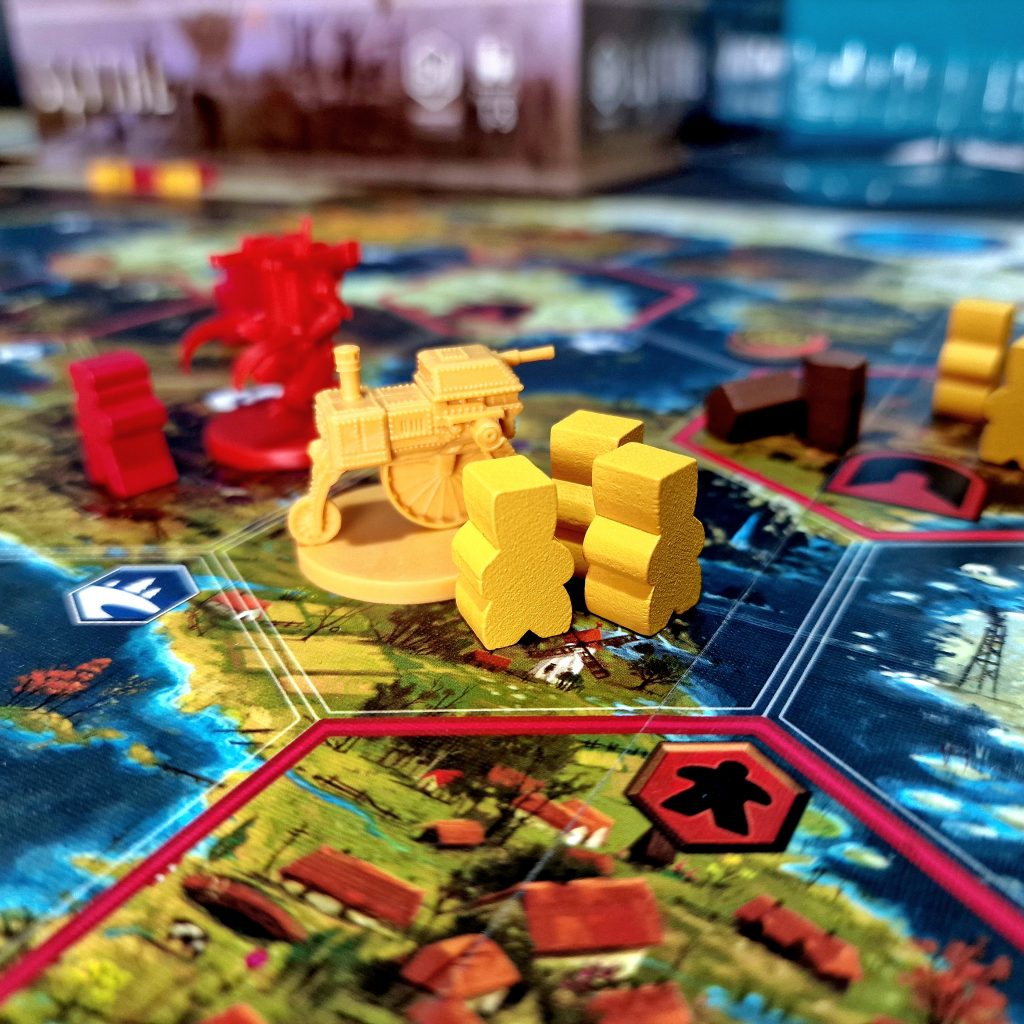
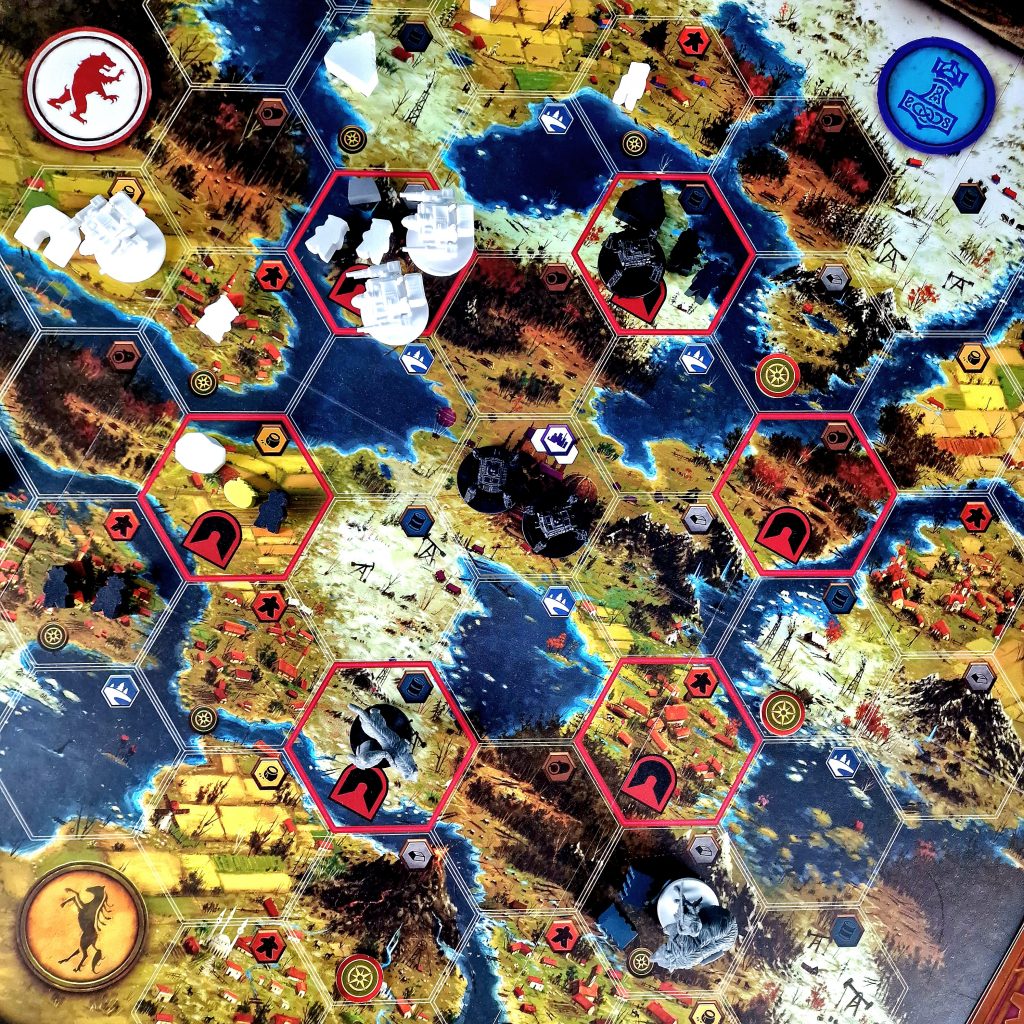

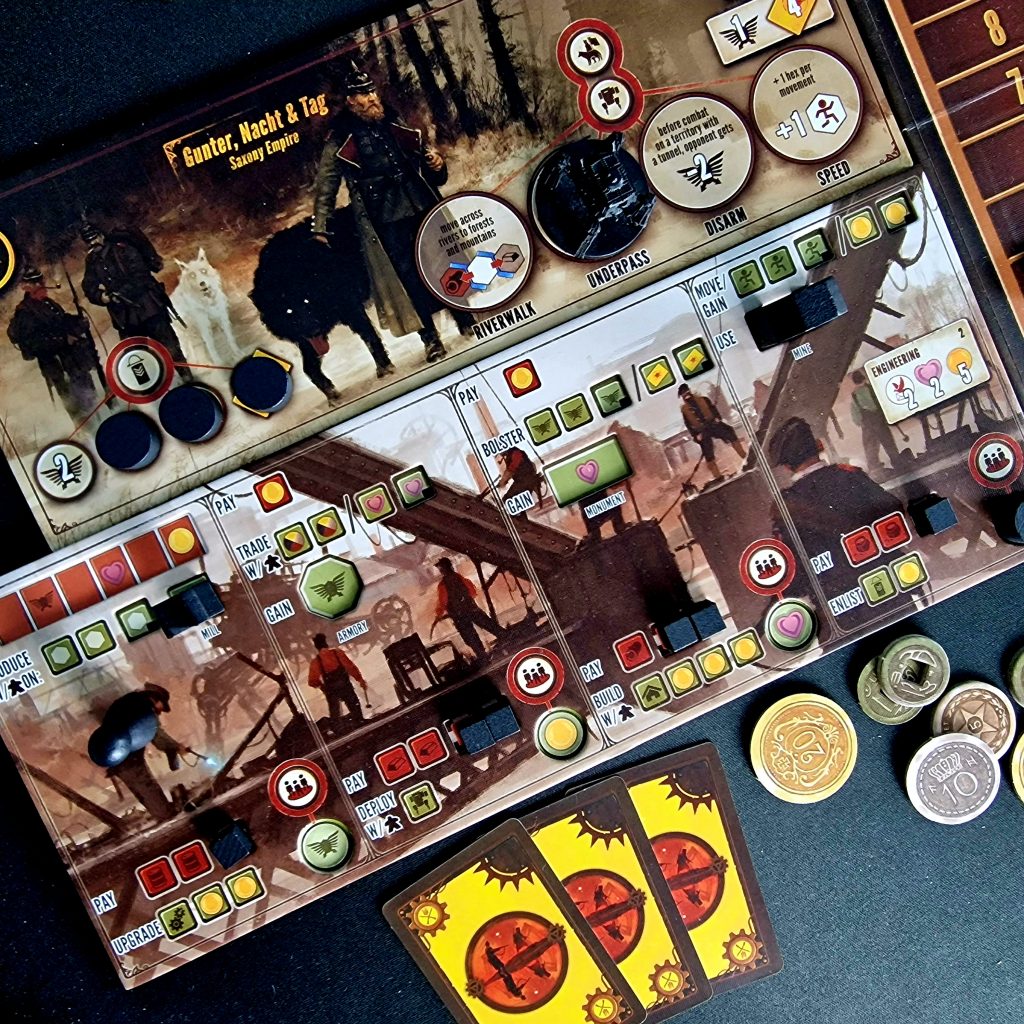
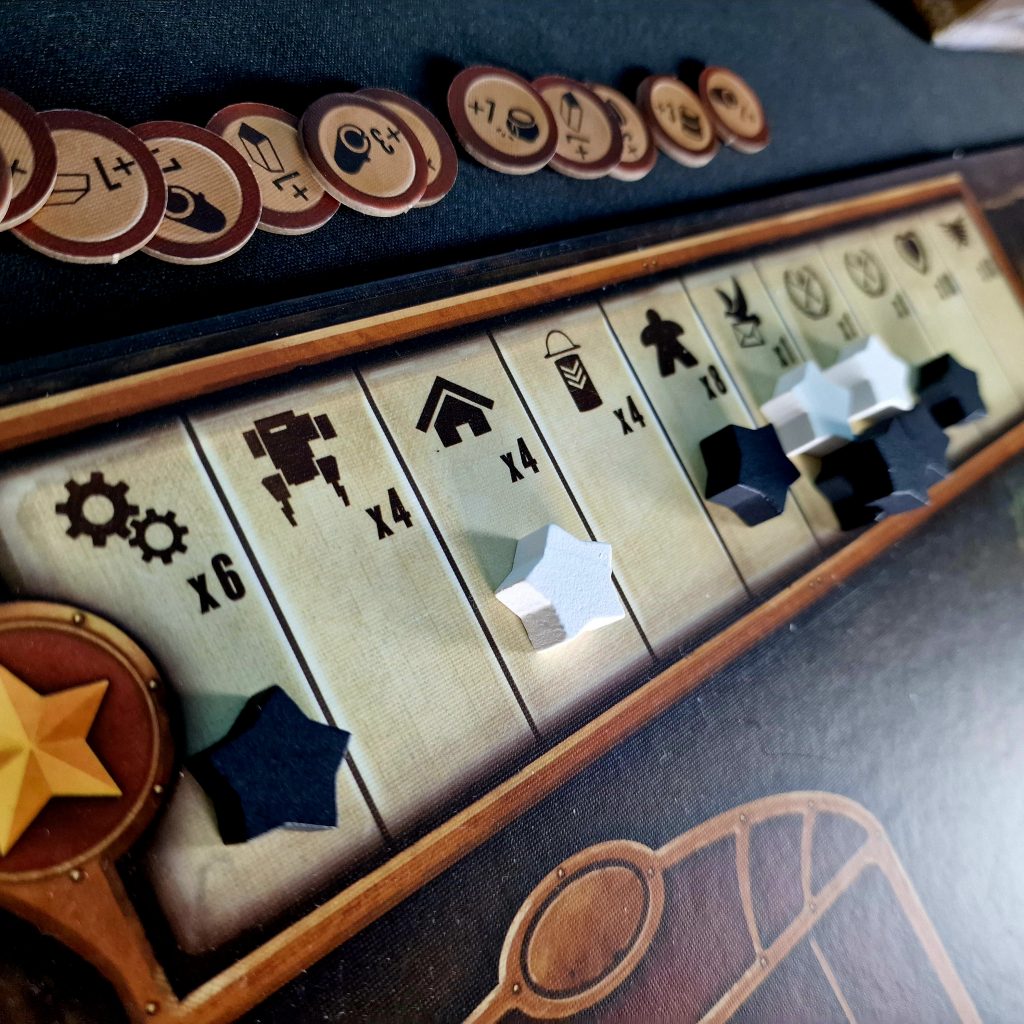
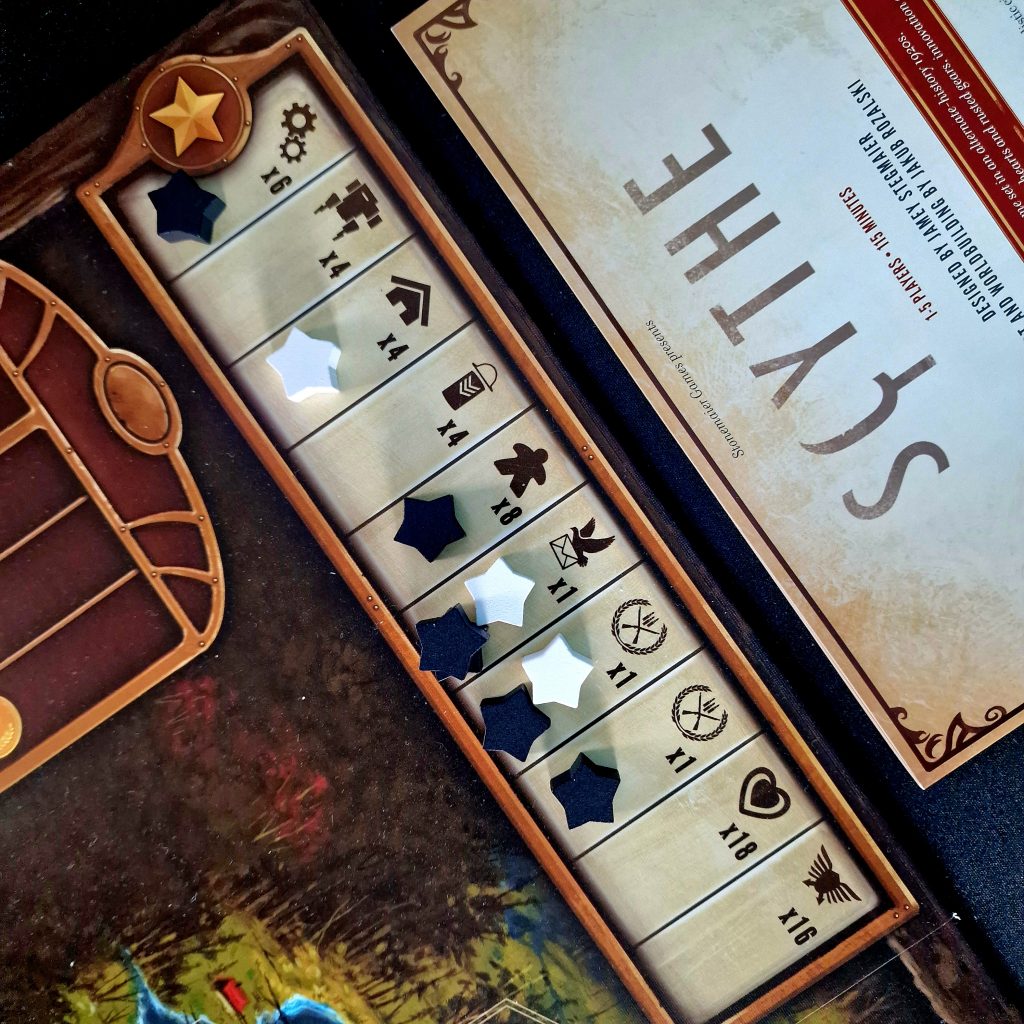
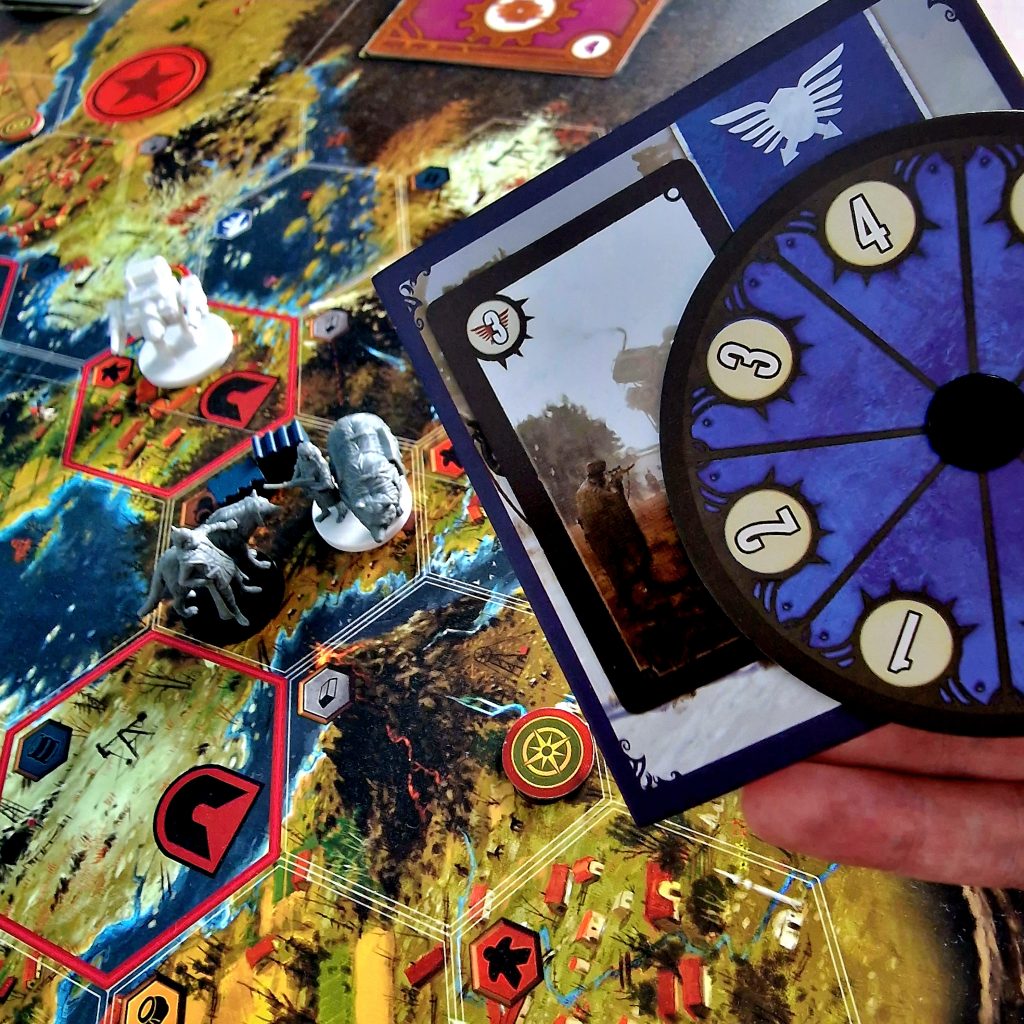

Leave a Reply